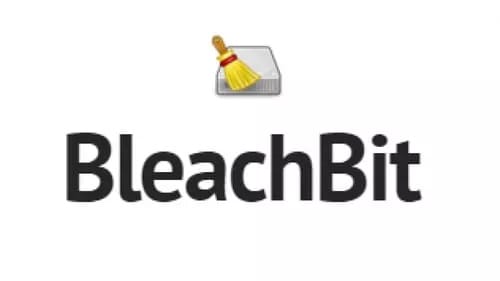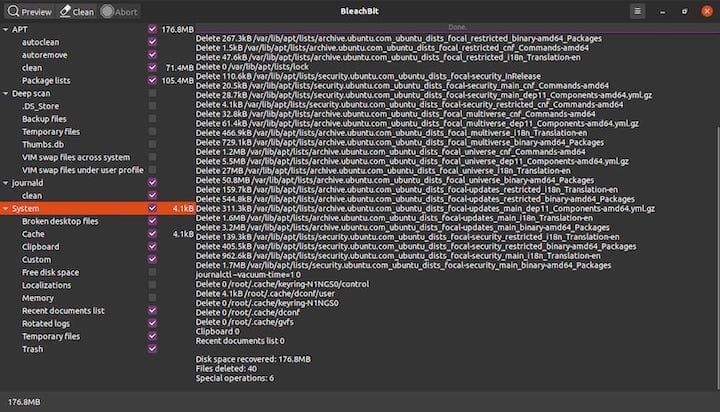How To Install BleachBit on Fedora 41

In today’s digital age, maintaining a clean and efficient operating system is essential for optimal performance. One of the most effective tools for this purpose is BleachBit, a powerful application that helps users free up disk space and protect their privacy by cleaning unnecessary files. This article will guide you through the process of installing BleachBit on Fedora 41, providing step-by-step instructions, troubleshooting tips, and additional resources to ensure a smooth experience.
What is BleachBit?
BleachBit is an open-source disk space cleaner and privacy manager that allows users to remove unwanted files from their systems. It is designed to free up space by deleting cache files, cookies, logs, and other unnecessary data that can accumulate over time. By doing so, it not only enhances system performance but also protects user privacy by removing traces of online activity.
Some key features of BleachBit include:
- File Cleaning Capabilities: Cleans temporary files from various applications, including web browsers and system logs.
- Privacy Protection: Erases cookies and browsing history to safeguard personal information.
- System Optimization: Frees up disk space, improving overall system speed and efficiency.
Compared to other cleaning tools like CCleaner, BleachBit stands out due to its open-source nature and the extensive range of supported applications. This makes it a versatile choice for Linux users looking to maintain their systems effectively.
Prerequisites for Installing BleachBit on Fedora 41
Before diving into the installation process, it’s essential to ensure that your system meets the necessary requirements. Here’s what you need:
- System Requirements: A compatible version of Fedora (in this case, Fedora 41) installed on your machine.
- Dependencies: Ensure you have essential packages like Python and GTK installed, as they are required for BleachBit to function correctly.
- System Update: It’s always a good practice to keep your system updated. Run the command
sudo dnf updatebefore proceeding with the installation.
Methods to Install BleachBit on Fedora 41
Using DNF Package Manager
The easiest way to install BleachBit on Fedora 41 is by using the DNF package manager. Here’s a step-by-step guide:
- Open Terminal: You can find the terminal in your applications menu or by searching for “Terminal.”
- Update Package Repository: Before installing any new software, it’s crucial to update your package repository. Run the following command:
sudo dnf update - Install BleachBit: Now, install BleachBit by executing:
sudo dnf install bleachbitThis command will download and install BleachBit along with any necessary dependencies.
- Verify Installation: Once installed, you can verify that BleachBit is available by typing:
bleachbit --versionThis command will display the installed version of BleachBit.
The DNF package manager simplifies the installation process by automatically handling dependencies and ensuring that you have the latest version of the software.
Installing from RPM Package
If you prefer or need to install BleachBit from an RPM package instead, follow these steps:
- Download the RPM Package: Visit the official BleachBit website and download the latest RPM package suitable for Fedora 41.
- Navigating to Download Directory: Open your terminal and navigate to the directory where you downloaded the RPM file. For example:
cd ~/Downloads - Install Using RPM Command: Run the following command to install BleachBit:
sudo rpm -Uvh bleachbit-x.x.x.rpmReplace “x.x.x” with the actual version number of the downloaded file.
- Troubleshooting Dependencies: If you encounter any dependency errors during installation, use:
sudo dnf install [missing-package]Replace “
[missing-package]” with the name of any required package mentioned in the error message.
Running BleachBit
After successfully installing BleachBit, you can launch it either from the terminal or through the graphical user interface (GUI).
- Launching from Terminal: Simply type:
bleachbitThis will open the application in its standard mode.
- Lauching from GUI: You can also find BleachBit in your applications menu. Look for “BleachBit” and click on it to start.
- User vs. Root Mode: Running BleachBit as a regular user allows you to clean user-specific files. However, running it as root (using:
sudobleachbit) gives access to system-wide cleaning options. Be cautious when using root mode as it can delete critical system files if not used properly.

Using BleachBit Effectively
Cleansing Options Available
BleachBit offers a variety of cleaning options tailored to different applications and file types. Here’s how to navigate these options effectively:
- Selecting Cleaning Options: Upon launching BleachBit, you’ll see a list of applications with checkboxes next to them. Common options include:
– Web browser caches (e.g., Firefox, Chrome)
– System logs
– Temporary files
– Application caches
Carefully review each option before selecting them; some may contain data you want to keep. - Avoiding Data Loss: Always double-check what you’re about to delete. If unsure about certain files or caches, consider unchecking those options or researching them further.
Scheduling Cleanups
A great feature of BleachBit is its ability to schedule regular cleanups. This ensures your system remains clutter-free without manual intervention. Here’s how you can set it up:
- Select Cleanup Options: Choose your desired cleaning options as previously mentioned.
- Scheduling Cleanups: Click on “File” in the menu bar and select “Schedule.” Follow the prompts to set up your desired frequency (daily, weekly, etc.).
- Saving Settings: Make sure to save your scheduled settings before exiting.
Troubleshooting Common Issues
If you run into issues while installing or using BleachBit, here are some common problems along with their solutions:
- Error: Dependency Issues During Installation:If you encounter missing dependencies while installing via RPM or DNF, check which packages are required and install them individually using:
sudo dnf install [missing-package] - Error: Application Fails to Launch:If BleachBit does not start after installation, ensure that all dependencies are correctly installed. Running it from terminal may provide error messages that can help diagnose issues.
- Error: Cleaning Process Takes Too Long:If cleaning takes an unusually long time, consider reducing selected options or closing other applications that may be consuming resources during cleanup.
- Error: Data Loss Concerns:If you’ve accidentally deleted important files using BleachBit, check if backups are available or consider using file recovery tools as a last resort.
Congratulations! You have successfully installed BleachBit. Thanks for using this tutorial for installing the BleachBit open-source system cleaner and privacy tool on Fedora 41 system. For additional or useful information, we recommend you check the official BleachBit website.